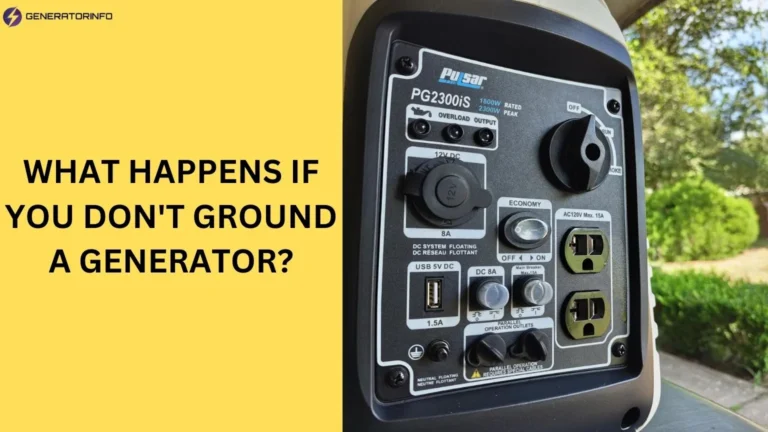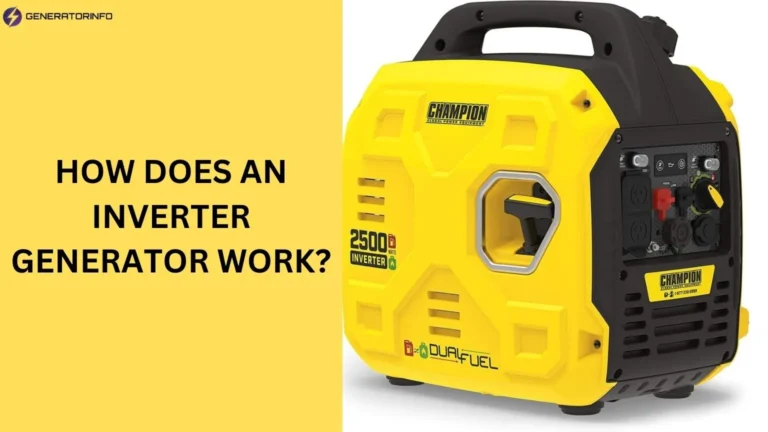How to Test a 12 Volt Generator? (Guide) of 2025
How to Test a 12 Volt Generator? is essential to ensure it operates efficiently and reliably. Whether you’re troubleshooting issues or performing routine maintenance, understanding how to conduct tests can save you time and money. In this guide, we’ll explore the steps and tools needed to effectively test a 12-volt generator.

Why Test Your 12 Volt Generator?
Before diving into the testing process, it’s important to understand why testing is crucial:
- Preventive Maintenance: Regular testing can help identify potential problems before they escalate, allowing for timely repairs.
- Optimal Performance: Ensures your generator delivers the necessary voltage and current for your devices.
- Safety: Testing helps prevent accidents caused by electrical failures.
Tools You’ll Need
To test a 12-volt generator, gather the following tools:
- Digital Multimeter: To measure voltage and current accurately.
- Battery Load Tester: Useful for checking the generator’s capacity under load.
- Wrenches and Screwdrivers: For securing connections and access.
- Safety Gear: Gloves and goggles to protect yourself while working with electrical components.
How to Test a 12 Volt Generator: Step-by-Step Guide
Step 1: Safety First
Before you begin testing, ensure your workspace is safe. Disconnect the generator from any load and ensure it’s turned off. Wear safety gear, including gloves and goggles.
Step 2: Inspect the Generator
Check for visible signs of damage, such as frayed wires, corrosion, or loose connections. Address any issues before proceeding.
Step 3: Set Up Your Multimeter
- Configure the Multimeter: Set it to the DC voltage setting. Ensure it’s capable of measuring at least 12 volts.
- Connect Probes: Attach the positive (red) probe to the positive terminal of the generator and the negative (black) probe to the negative terminal.
Step 4: Measure No-Load Voltage
With the generator off, measure the no-load voltage.
- Expected Reading: A fully charged 12-volt generator should read between 12.6 to 12.8 volts.
- Troubleshooting: If the reading is significantly lower, your battery may need charging or replacement.
Step 5: Start the Generator
Start your generator and allow it to run for a few minutes. This allows the voltage regulator to stabilize.
Step 6: Measure Loaded Voltage
Using the multimeter, measure the voltage again while the generator is running.
- Expected Reading: A healthy 12-volt generator should read between 13.5 to 14.5 volts when loaded.
- Troubleshooting: If the voltage is too low or too high, there may be issues with the regulator or the generator itself.
Step 7: Test Under Load
To get a more accurate picture of the generator’s performance, test it under load.
- Connect a Load: Use a battery load tester to simulate a load.
- Monitor Voltage: Check the voltage while the generator is under load.
- Expected Reading: The voltage should remain above 12 volts. If it drops significantly, it may indicate a failing generator.
People also ask
How to test if a generator is working?
Here’s a concise guide on how to test if a generator is working:
Safety First: Wear gloves and goggles.
Check Fuel: Ensure there’s enough fuel in the tank.
Inspect Connections: Look for loose wires or damaged connections.
Start the Generator: Turn it on and listen for a steady hum.
Check Voltage: Use a multimeter on the outlet; it should read 110-120 volts.
Load Test: Connect a small appliance; it should run without issues.
How to test a 12 volt positive ground generator?
Here’s a concise guide on how to test a 12-volt positive ground generator:
Safety First: Wear gloves and goggles.
Visual Inspection: Check for loose or damaged wires.
Disconnect Load: Unplug any connected devices.
Set Up Multimeter: Set to DC voltage.
Connect the red probe to the positive terminal and the black probe to the ground.
Measure No-Load Voltage: Start the generator; it should read 12.6 to 12.8 volts.
Measure Loaded Voltage: Connect a load; it should stay above 12 volts.
How to test a car generator with a multimeter?
Here’s a concise guide on how to test a car generator (alternator) with a multimeter:
Safety First: Turn off the engine and wear gloves.
Set Up Multimeter:
Turn it to DC voltage.
Set it to read at least 15 volts.
Check Battery Voltage:
Connect the red probe to the positive terminal and the black probe to the negative terminal.
A healthy battery should read about 12.6 volts.
Start the Engine:
Measure voltage again; it should be 13.5 to 14.5 volts.
Load Test:
Turn on accessories (headlights, AC) and check voltage; it should remain above 13 volts.
Conclusion
Knowing how to test a 12-volt generator is invaluable for ensuring its reliability and efficiency. Regular testing helps you catch potential issues early, preventing costly repairs and downtime. With the right tools and procedures, you can keep your generator in optimal condition and ready for use whenever you need it.






